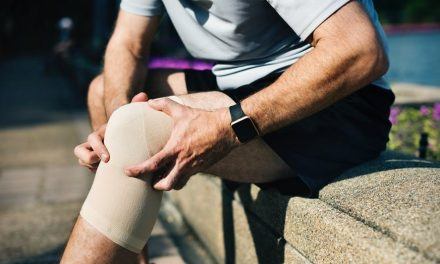Let’s get to know about painful hamstring strains appear on the back of your leg. Most importantly, in this article, we will be covering in depths on risks factors for a hamstring injury.
Let’s start rolling by understanding what a hamstring is.
What is the Hamstring?
Your hamstring is that muscles which located on behind your thighs.
The strain of these muscles is very common to people who involved themselves in various kind of sport such as football, track, or basketball prayer, runners and skaters.
The hamstring is not just a single string. They are a group of muscles at the back of your thigh which allow you to bend your leg at the knee. As a group of muscles, they are known as the hamstring. Hamstring strain, sometimes called a ‘pulled hamstring’ or a ‘pulled muscle’, it happens when some of the muscles in the hamstring get stretched too far and tear.
Hamstring strains can be severe needing surgery. Therefore, avoiding them is important where possible. In preventing, understating your risk profile for the hamstring stain is the key.
Before digging further, let’s continue understanding the hamstring injury better by understanding its signs and symptoms.
How To Identify a Hamstring Injury?
Some key symptoms of a hamstring strain are below.
- It will cause weakness in your leg that will last for a quite a long time after the injury
- You will feel some pain in the back of your thigh and lower buttock when straightening the leg
- Bruising and swelling in the back of the thigh
- You will see pains during exercise
- You will feel this pain radiating on to your knee when trying to walk
Knowing about the symptoms, now let’s look into how to confirm if the pain is actually due to a hamstring strain.
How Hamstring Strain Diagnosed?
A hamstring strain is diagnosed when you see a physical therapist or see the doctor.
The doctor will carry out the test or examine your leg. He/she may ask you some questions to know more concerning the injury, and how severe is the pain is to you. The test or examination will help the doctor to know the grade level of your strain out of the following strain severity grades.

Tip: Use a Knee Pillow to recover from a hamstring strain fast. The Calming Comfort and Comfilife are good but without their cons.
Hamstring Injury Severity Grades
The following are the Grade Levels.
-
Grade 1
Pulled muscles in this grade level are not that painful. You only experience some pain on your leg when you are walking, and your leg will not swell up, unlike in next severity levels.
-
Grade 2
This level will cause you serious pain because some muscles are partially torn. This makes you limp when you are walking, as otherwise, you may not bear the pain.
-
Grade 3
At this level, there’s a total tear of the hamstring muscle. You might not be able to straighten your leg, and your leg will swell. You will experience very severe pain. As such, most likely, you would not be able to walk at all (without assistance) at least for a few days.
Tip: Remember, muscle pains are different from bone pains.
Now the question is what can cause a hamstring injury.
What Could Cause a Hamstring Injury?
Let’s discuss the causes of a hamstring strain, thereby making it so difficult for you to walk.
If you involved in a process where your muscle was overloaded, is the major cause of injury to the hamstring. So, when the muscle is shortened, it will cause strain and tear. A pulled muscle will also result when the muscle is taxed too suddenly.
For instance, when you jump up, your hamstring muscle usually contracts repeatedly with as the lengthen of your leg, and this lengthening is a normal load of muscle that create a conducive environment for injury. Suddenly, you may feel some pain on your leg.
Now, let’s turn on to the main question of this article.
What are the Risks Factors for Hamstring Injury?
The risks associated with for you to experience a hamstring strain are below. The idea is if you could avoid the risks, the lesser the chances you to get a hamstring injury.
-
Your age
Hamstring injuries are over twice commoner among the age group under 25, and people from that age group recover it from faster than someone over 60 years old.
-
Muscular fatigue
When the muscle is overtired due to rubbing, it cannot absorb much energy.
-
Previous history of hamstring injury or strains
-
Poor muscle elasticity
-
Weak conditioning
When your muscles are poor or week as the case may be, you will find out that you can not perform some type of exercises.
-
Muscle imbalance
This is where some of your muscles are not well-balanced or stronger enough compared to other muscles in the body.
-
Wrong exercise or sporting techniques
If you are physical technique is improper or inadequate, that means you are likely to experience a strain. That’s why it’s important to involve a qualified couch for your sustainable success in the game you play. The hamstring can be commonly found in the people who perform the following activities.
- Soccer
- Basketball
- Football
- Running
- Dancing
When To Seek Help for Hamstring Injury?
Although most hamstring injuries normally respond well to treatment and heal within a few days if your pain is not healed or your symptom is not getting better, it’s good you contact your doctor for some advice.
No matter how severe it may be, your doctor might give you some important tips on for how long you should rest. In addition, he/she may refer you to a physical therapist, who could advise you on the types of exercise to do that will help you prevent future injuries and identify your muscular imbalances that may contribute to your injuries. Importantly, the type of exercises to avoid.
Your doctor could, if concerned, refer you to a pain management specialist or surgeon should your pain becomes intense, suggesting an internal tear or fracture.
Remember, anyone who notices that he or she has tendonitis should go and see a doctor for a diagnosis. Because sometimes, tendonitis resembles other conditions, like bursitis.
Treatment for Hamstring Strain
The first intention of the treatment is to prevent the injury from getting severe.
As noted earlier, most of the hamstring strains usually heal on their own, but for speed up healing, you can follow the below strategies.
- Ice your leg for 20-30 minutes every 3 to 4 hours for 2 to 3 days so that you can reduce the pain.
- Put your leg on the pillow when you are sitting or lying down.
- Try gentle stretching exercises to encourage blood flow to the tendon and aid healing.
- You must avoid sitting for a long time because it can increase the muscles tension and cause pain in other neighboring muscles too.
- Compress your leg by using an elastic bandage around the leg to keep down swelling.
- Take anti-inflammatory painkillers such as Ibuprofen.
It might take a few weeks for the above home remedies to help you with the symptoms.
Remember, if the strain lasts for more than a few days, you should seek medical advice. If the pain didn’t resolve after weeks, there is a risk of the pain becoming ‘chronic’ and leading to muscle or tendon inflammation such as tendonitis.
Tendonitis is a chronic injury which comes and goes. Identifying the triggers of tendonitis can help with managing the condition. In this case, the pain is most severe when the home treatment does not work, and it will keep returning, requiring for your doctor inject the tendon with corticosteroids.
Corticosteroid injection does not cure the injury, but it can provide pain relief for some weeks, and in some cases, your doctor may recommend surgery to treat chronic tendonitis.

Tip: Here are the home remedies for muscle pains in the leg.
How Long Would It Take For a Hamstring Strain to Heal?
The healing time depends on how serious the injury is. You must also keep it in your mind that different people recover from hamstring injuries in different ways.
As you get to heal, you should work the hamstring with a new activity that won’t aggravate the strain.
Below are the signs for healing has taken place successfully.
- When you can move your leg without any pain in your leg.
- When you feel so strong like you never have any injury before.
- When you can jog, spring and jump without any feeling of pain.
However, healing from your initial hamstring injury doesn’t mean that you should not ever anticipate a second or recurrent injury. That’s where avoiding or at least minimizing exposure to hamstring injury risk factors is so important.
Ways to Prevent Hamstring Strain
Hamstring strain is an excruciating injury, that the athletes should try as much as possible to avoid them because healing a hamstring strain is more difficult than preventing it.
Significant ways to avoid a secondary injury are below.
- You must warm-up yourself before stretching.
- When you are exercising, if you feel any pain, you should just stop the exercise for at least for that day/week.
- Another preventive measure is that you must stretch and strengthen hamstring.
- You must learn to exercise regularly in order to maintain muscle tone and flexibility.

Conclusions
The hamstring sprain can be very painful and make you feel so weak to the extent that you will not be able to do that particular type of sport you love doing at least for a while. Most times, the strain may be likely to live with you for some days, if not weeks. There are times when you get enough rest, compress it with ice and elevate the pain can go away from your leg in no time.
At this point, do not hesitate to let your doctor know if you feel like there is an injury because quicker you get help, the quicker you will get back to your regular exercise and sporting activities.
Tip: Use a Knee Pillow to recover from a hamstring strain fast. The Calming Comfort and Comfilife are reputable.










I am a basketball player and my hamstring muscles experience frequent strain. I am usually unaware of my hamstring injury. The symptoms listed above would be useful for me. I usually consult a pain management specialist when I experience severe hamstring pain. Really a useful and informative post.